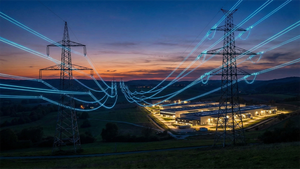
Applied Digital Corporation (NASDAQ: APLD) has cemented its position as a formidable "AI stock winner," experiencing an extraordinary surge in its stock price from the $4-$5 range to recent highs nearing $25. This remarkable ascent, culminating in a year-to-date gain exceeding 200% as of late September 2025, underscores a significant market recalibration as investors flock to companies at the forefront of the artificial intelligence revolution. The company's strategic pivot from cryptocurrency mining to high-performance computing (HPC) for AI workloads has been the primary catalyst, transforming it into a critical infrastructure provider for the burgeoning AI industry.
This dramatic revaluation reflects a broader market recognition of Applied Digital's pivotal role in supporting the immense computational demands of AI. As the world races to develop and deploy advanced AI models, the need for robust, scalable, and specialized data center infrastructure has skyrocketed. Applied Digital's proactive shift to meet this demand has not only delivered substantial returns for shareholders but also positioned it as a bellwether for the infrastructure segment of the AI economy, signaling a clear path forward for companies capable of providing essential services to this rapidly expanding sector.
From Crypto to AI: Applied Digital's Strategic Transformation
Applied Digital's journey to becoming an AI infrastructure powerhouse is marked by a strategic and timely pivot. Historically known for its involvement in cryptocurrency mining data centers, the company began to aggressively reorient its operations towards high-performance computing (HPC) tailored for artificial intelligence workloads. This shift gained significant momentum, with the stock's most pronounced gains occurring in the lead-up to and during September 2025. From a 52-week low of $3.31 around April 2025, APLD shares surged dramatically, demonstrating over 70% growth in the two weeks prior to September 22, 2025, and nearly 27% in the five days leading up to September 23, 2025, when it hit an all-time high of $24.67.
The core of this transformation lies in Applied Digital's commitment to building "AI Factories"—advanced data centers specifically designed to host powerful AI clusters. A key development includes an expanded data center lease with cloud provider CoreWeave, which is projected to boost total contracted capacity to 400 megawatts and generate an estimated $11 billion in future lease revenue. Furthermore, the company announced plans for a colossal $3 billion AI mega-campus, Polaris Forge 2, in North Dakota, with initial capacity expected in 2026 and full completion by early 2027. These initiatives highlight a clear roadmap for scaling its AI infrastructure offerings.
Key players in this narrative include Applied Digital's management team, who orchestrated the strategic pivot, and partners like CoreWeave, which is a significant client for their HPC data centers. The broader AI industry, particularly companies requiring extensive computational resources for model training and inference, are also indirect stakeholders, benefiting from the increased availability of specialized infrastructure. Initial market reactions have been overwhelmingly positive, with analysts largely maintaining a "Strong Buy" consensus, despite the stock's rapid appreciation pushing it above some average 12-month price targets. The inclusion of Applied Digital in Nvidia's (NASDAQ: NVDA) AI investment portfolio further validated its strategic direction and market potential.
While revenue growth has been robust, with a 41% year-over-year increase in the fourth quarter of fiscal year 2025, the company reported a net loss of $233.7 million for the fiscal year, indicating that significant investments are being made to fuel future growth. This financial dynamic is typical for high-growth companies in nascent industries, where aggressive expansion often precedes sustained profitability. The market appears willing to overlook current losses in favor of future potential, as evidenced by the high valuation and strong investor confidence.
Market Ripple Effects: Winners and Losers in the AI Infrastructure Boom
Applied Digital's (NASDAQ: APLD) meteoric rise as an AI infrastructure leader signals a clear delineation of winners and losers within the broader technology and financial markets. The most obvious beneficiaries are companies like Applied Digital itself, which have successfully pivoted or are natively positioned to provide the foundational computing power for AI. Other data center operators that can rapidly adapt their facilities to handle high-density, power-intensive AI workloads, or those specializing in liquid cooling and advanced power solutions, stand to gain significantly. This includes established players in the data center industry that can upgrade their offerings and new entrants focused purely on AI-specific infrastructure.
Conversely, companies heavily invested solely in traditional, lower-density data center operations, or those that have been slow to recognize and adapt to the unique demands of AI workloads, may find themselves at a disadvantage. The shift towards AI requires not just more space, but specialized cooling, immense power delivery, and robust networking capabilities that many legacy data centers are not equipped to handle without substantial retooling. Cryptocurrency mining companies that fail to diversify or transition their existing infrastructure could also face increasing pressure as the market prioritizes AI-driven growth over less energy-efficient operations.
Moreover, the increasing demand for AI infrastructure benefits hardware manufacturers such as Nvidia (NASDAQ: NVDA), which supplies the powerful GPUs essential for AI computations, and other component suppliers for high-performance servers and networking equipment. Cloud providers like CoreWeave, which are expanding their AI cloud services, also win by partnering with companies like Applied Digital to scale their underlying physical infrastructure. This symbiotic relationship creates a robust ecosystem where innovation and demand feed into each other, driving growth across the value chain.
The financial markets are also seeing a reallocation of capital, with investors increasingly favoring companies with clear exposure to AI growth vectors. This means that while AI infrastructure providers flourish, companies in sectors less directly impacted by AI, or those perceived as slow movers, might experience capital outflow. The high valuation of APLD, with a price-to-sales ratio of 13.5x, reflects this investor appetite for AI-pure plays, even as profitability remains a future goal. This trend could lead to increased M&A activity as larger tech firms seek to acquire specialized AI infrastructure capabilities.
The Broader Significance: Fueling the AI Revolution
Applied Digital's (NASDAQ: APLD) emergence as a dominant AI infrastructure provider is not an isolated event but a critical reflection of broader industry trends. The insatiable demand for artificial intelligence capabilities, from large language models to advanced machine learning applications, is creating an unprecedented need for specialized computing power. This event underscores the fundamental truth that AI's potential cannot be realized without the underlying physical infrastructure to support it. Applied Digital's success highlights the pivotal role of "AI Factories" and high-performance computing data centers as the bedrock of the AI revolution.
This trend has significant ripple effects across the technology ecosystem. Competitors in the data center space are now under immense pressure to either pivot towards AI-specific infrastructure or risk being left behind. Companies like Equinix (NASDAQ: EQIX) and Digital Realty (NYSE: DLR) may need to accelerate their investments in high-density, liquid-cooled facilities to remain competitive in the AI era. Partners, particularly cloud providers and AI developers, benefit from the increased availability of specialized infrastructure, which allows them to scale their operations more efficiently and cost-effectively, accelerating AI innovation.
From a regulatory standpoint, the rapid expansion of AI data centers raises questions about energy consumption, environmental impact, and potentially, data sovereignty. Governments and regulatory bodies may begin to scrutinize the power demands of these facilities and explore incentives or regulations for sustainable practices. The sheer scale of projects like Applied Digital's Polaris Forge 2 mega-campus suggests that energy infrastructure development will need to keep pace, potentially leading to new policy initiatives aimed at grid modernization and renewable energy integration.
Historically, this situation bears resemblance to the dot-com boom of the late 1990s, where infrastructure providers like Cisco (NASDAQ: CSCO) saw massive growth as the internet scaled. Similarly, the rise of cloud computing led to significant investments in hyperscale data centers. Applied Digital's current trajectory suggests a parallel pattern, where fundamental infrastructure providers enable the growth of a transformative technology. However, unlike some past bubbles, the tangible demand for AI computing power is very real and growing, suggesting a more sustainable underlying driver, albeit with potential for market volatility as the sector matures.
What Comes Next: Navigating the Future of AI Infrastructure
Looking ahead, Applied Digital's (NASDAQ: APLD) trajectory suggests a future defined by aggressive expansion and deepening integration within the AI ecosystem. In the short term, the company will likely focus on the rapid deployment and operationalization of its committed projects, such as the Polaris Forge 2 mega-campus. Successful execution of these large-scale data center builds will be crucial for maintaining investor confidence and meeting the growing demand from AI clients. Continued securing of significant long-term contracts with major AI players and cloud providers will also be a key indicator of its sustained success.
In the long term, Applied Digital may explore further strategic pivots or adaptations. This could include vertical integration into specific AI services, offering not just infrastructure but also managed AI computing platforms, or even developing proprietary AI solutions leveraging their robust infrastructure. Potential market opportunities include expanding into international markets where AI development is rapidly accelerating, or specializing in niche AI computing needs, such as quantum computing infrastructure, as those technologies mature. Challenges may arise from increased competition from hyperscale cloud providers or other specialized AI infrastructure companies, as well as the ever-present need for significant capital investment to fund ongoing expansion.
Potential scenarios and outcomes for Applied Digital vary. A highly optimistic scenario sees the company continuing its rapid growth, achieving sustained profitability as its facilities come online and generate substantial recurring revenue, and potentially becoming an acquisition target for a larger tech giant seeking to bolster its AI infrastructure capabilities. A more cautious scenario involves increased market saturation, pricing pressures, or unforeseen technological shifts that could impact demand for its current offerings. The company will need to remain agile, continuously innovating its data center designs and cooling technologies to keep pace with the evolving demands of AI.
Investors should watch for updates on the construction progress of new facilities, the signing of new customer contracts, and, critically, the company's path to profitability. While revenue growth is impressive, demonstrating a clear roadmap to positive net income will be vital for long-term shareholder value. Additionally, monitoring the broader AI market trends, competitive landscape, and regulatory developments around energy consumption will provide further insights into Applied Digital's future prospects.
Comprehensive Wrap-Up: Applied Digital's Enduring Impact on the AI Landscape
Applied Digital's (NASDAQ: APLD) journey from a modest valuation to a prominent "AI stock winner" is a compelling narrative of strategic foresight and rapid execution in a transformative technological era. The key takeaway is the profound importance of infrastructure in enabling the artificial intelligence revolution. Applied Digital's success underscores that while AI models and applications capture headlines, the physical backbone that supports their computational demands is equally, if not more, critical. Its pivot from crypto mining to high-performance computing for AI has proven to be a masterstroke, positioning it at the very heart of the industry's growth.
Moving forward, the market for AI infrastructure is poised for sustained expansion. Applied Digital's substantial contracts, ambitious "AI Factory" projects, and strong analyst sentiment suggest it is well-placed to capitalize on this trend. However, investors should remain cognizant of the inherent risks, including the significant capital expenditures required for expansion and the current lack of profitability. The company's high valuation reflects future expectations, making it susceptible to market sentiment shifts or delays in project execution.
The lasting impact of Applied Digital's rise extends beyond its financial performance. It serves as a powerful case study for companies seeking to adapt and thrive amidst technological disruption, highlighting the importance of identifying emerging needs and aggressively reallocating resources to meet them. Its commitment to building dedicated AI infrastructure will not only fuel the development of advanced AI but also drive innovation in data center design, energy efficiency, and cooling technologies.
What investors should watch for in the coming months are concrete milestones in its construction projects, the diversification of its client base beyond key partners, and clear indications of improving margins and a pathway to sustained profitability. The ability of Applied Digital to consistently deliver on its ambitious plans will determine its long-term success and its enduring legacy as a foundational pillar of the AI-powered future.
This content is intended for informational purposes only and is not financial advice




